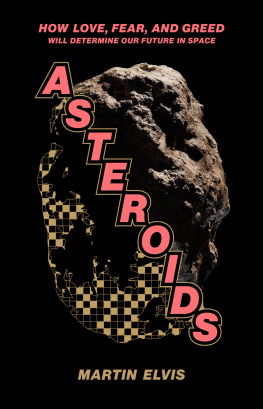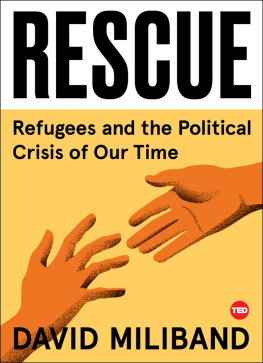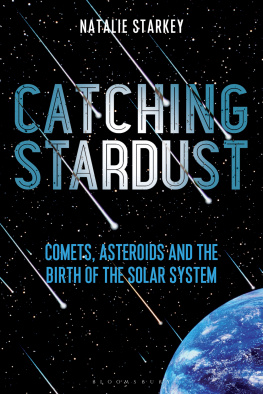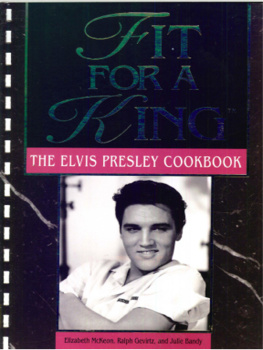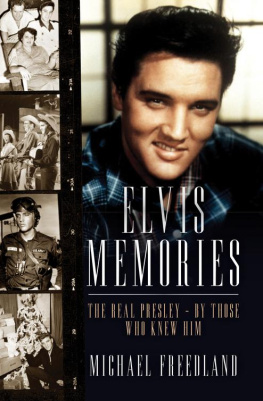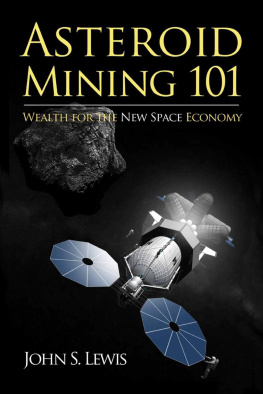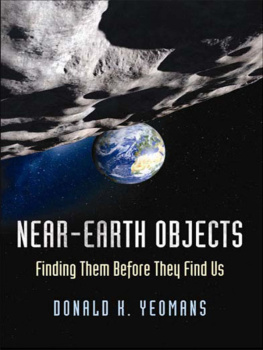Asteroids

Published with assistance from the Louis Stern Memorial Fund.
Copyright 2021 by Martin Elvis.
All rights reserved.
This book may not be reproduced, in whole or in part, including illustrations, in any form (beyond that copying permitted by Sections 107 and 108 of the U.S. Copyright Law and except by reviewers for the public press), without written permission from the publishers.
Yale University Press books may be purchased in quantity for educational, business, or promotional use. For information, please e-mail (U.K. office).
Set in Galliard Old Style type by IDS Infotech Ltd., Chandigarh, India.
Printed in the United States of America.
Library of Congress Control Number: 2020948370
ISBN 978-0-300-23192-2 (hardcover : alk. paper)
A catalogue record for this book is available from the British Library.
This paper meets the requirements of ANSI/NISO Z39.48-1992 (Permanence of Paper).
10 9 8 7 6 5 4 3 2 1
Contents
Preface
In the past few years the idea of mining the asteroids for their resources has been much in the news. Breathless stories described billionaires and movie directors investing in start-ups that would soon generate fortunes from precious metals gleaned from the asteroids. Several notable personalities declared that the first trillionaires would be asteroid miners. As a scientist I found these claims dubious. I wanted them to be true, but I had to investigate. This book is the result.
By starting from the basic motivations that make asteroids appealing to those who would exploit themlove, fear, and greedmy hope is to give the reader a fuller perspective of the whole issue. There is more to the story than just the technical challenges about how to identify the truly valuable asteroids and how to proceed with mining these; there are also important questions about the markets for asteroid resources, the economics involved, the legal framework that will be adopted, and the input that will be needed from policy experts and diplomats. There are even ethical issues to be considered. So many skills will be necessary to make asteroid mining a reality that no one can be a true expert in all aspects of the endeavor, but the aim of this book is to provide an introduction to them all.
After setting the scene with an introduction to the science of asteroids, Ill proceed to our motives for going to them: love of finding things out, fear of being destroyed by a killer asteroid, and the greed for profit. The chapters that follow will explain the means by which we will go about mining the asteroids, leading to the final section, in which we will examine the opportunities they could yield. Finally, well look at what we can expect in the long run if asteroid mining takes off.
Acknowledgments
No one can be a true expert on every aspect of asteroid mining. I have relied heavily on the knowledge and skills of many colleagues in writing this book. Deep thanks and gratitude are due to all those who gave their time to answer my queries. At the Center for Astrophysics | Harvard & Smithsonian, I thank my colleagues Jonathan McDowell, JL Galache, Peter Vere, Kim McLeod (on sabbatical from Wellesley), Maria McEachern, and Charles Alcock, as well as my students Charlie Beeson, Thomas Esty, Chris Desira, Nina Hooper, Sukrit Ranjan, Anthony Taylor, and Matt Ontiveros. I also thank BC Crandall for early encouragement; Alanna Krolikowski and Tony Milligan (KCL), my collaborators on policy and ethics; Matt Weinzierl, Martin Strmer, Ian Lange, Angela Acocela, and Anette Mikes of the Harvard Business School for advice in business and economics; John S. Lewis, the founding father of asteroid mining, for advice on resources; Jessica Snyder, Mark Sonter, Benjamin Lehner, and many others for their deep knowledge of asteroids; Rick Binzel, Francesca DeMeo, for the naming of 9283 Martinelvis, and Bobby Bus, its discoverer; Dan Britt, Kevin Cannon, Larry Nittler, Glenn MacPherson, Paul Steinhardt, Julie McGeoch and Malcolm McGeoch, Roger Fu, Alessondra Springmann, and Tim Elliott for meteorites and geology advice; and Cathy Plesko and Brent Barbee for planetary defense. I also thank John Brophy and Tom Prince for letting me participate in the Asteroid Retrieval Mission discussions; Nathan Strange, Damon Landau, and Marco Tantardini for celestial mechanics advice; Regan Dunn for information on dinosaurs; Karen Daniels for granular materials advice; David Keith and Oliver Morton for an introduction to geoengineering; Daniel Faber, Chris Lewicki, Joel Sercel, Erika Ilves, Amara Graps, and Jim Keravala for insights into entrepreneurship; Joanne Gabrynowicz, Laura Montgomery, Rand Simberg, Bruce Mann, and Alissa Haddaji for information on the law of space. I received valuable help from Janne Robberstad, Kelly and Zach Wienersmith, Adam Dipert, and Tibor Balint regarding the arts in space; from Conevery Valencius, Kathryn Denning, and Michelle Hanlon on cultural issues; and from Sara Schechner on historical matters. In every case the individuals named supplied new understanding of the issues involved; any misunderstandings are mine alone.
There is a small cadre of space journalists whose articles are an invaluable first draft of history to whom I am truly indebted.
I thank Priyamvada Natarajan, for her support and for connecting me with Yale University Press; Joe Calamia, Jean Thomson Black, and Joyce Ippolito for their editorial assistance; and the Radcliffe Institute for Advanced Study for hosting our 2018 exploratory workshop on space resources.
I owe an unpayable debt to my engineering family from Birmingham, UK: my parents, Wilfred Hanson Elvis and Vera Helen Elvis, and my older brother Graham Elvis, who all assumed I would become an engineer too; finally, maybe, I have redeemed myself. And most of all, I thank my immediate family, Pepi Fabbiano and Camilla Elvis, for their knowledge of Latin, but mainly for their patience as I ranted about asteroid mining. Hopefully they will get some peace now.
A Note on the Text
Metric Measurement
Lets not propagate imperial or U.S. customary units into space! It would only make our lives harder. A simple mistake in imperial versus metric units led to the demise of a Mars probe, the Mars Climate Orbiter, in 1999. Only Myanmar, Liberia, and the United States do not use metric units.
Its not so hard. For kilometers think miles; for meters think yards; for metric tons think tons. In most cases it really wont matter, as the numbers involved with space tend to be much bigger than we are used to thinking about. (But if more precision is needed, then 1 kilometer is 0.6 miles; 1 meter is 3 feet, 3 inches; 1 metric ton is 1.1 U.S. tons.)
Special Terms
Several terms come up so often and are usually referred to by their acronyms or by their short-form names that its helpful to list them for reference.
AU | astronomical unit, the mean distance of the Earth from the Sun |
cis-lunar | within the Earth-Moon system |
delta-v | change of velocity |
ESA | European Space Agency |
GEO | geostationary Earth orbit |
ISS | International Space Station |
JAXA | Japan Aerospace Exploration Agency |
JPL | Jet Propulsion Laboratory |
LEO | low Earth orbit |
PPP | public-private partnership |
Asteroids
Introduction: Why Boldly Go?
Next page
